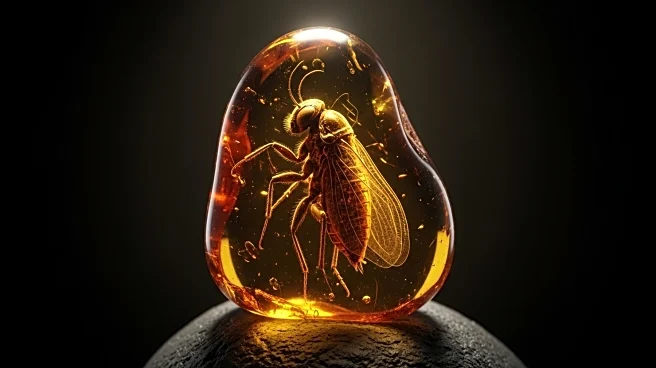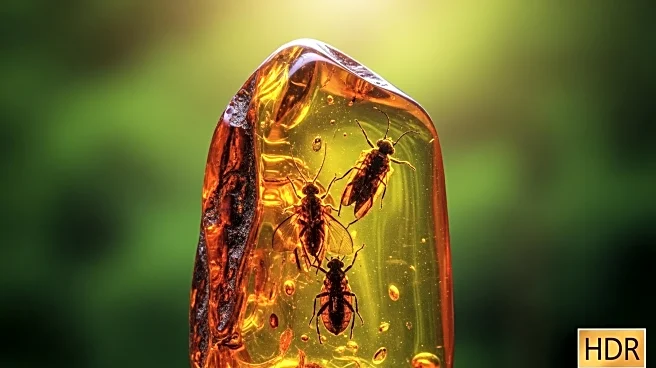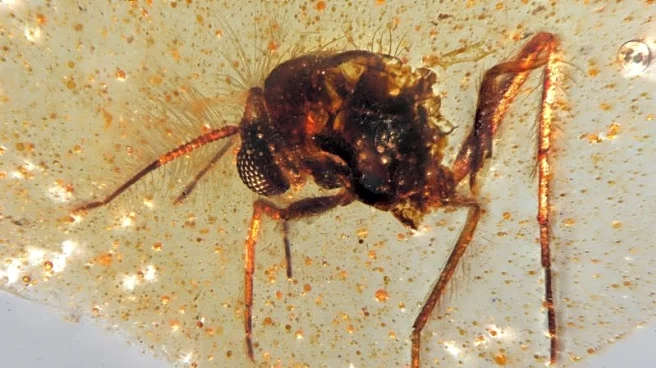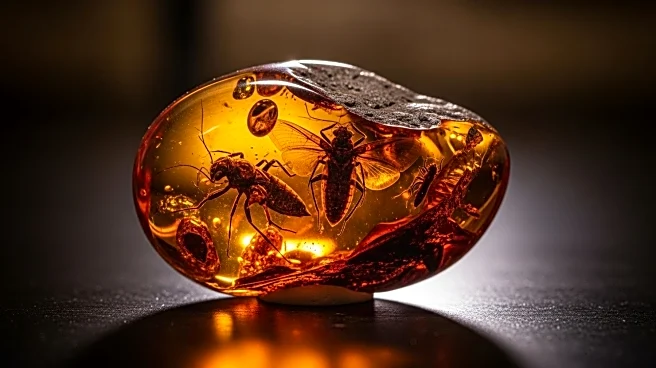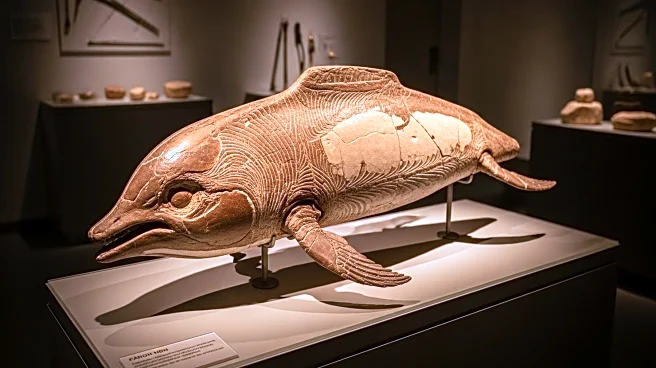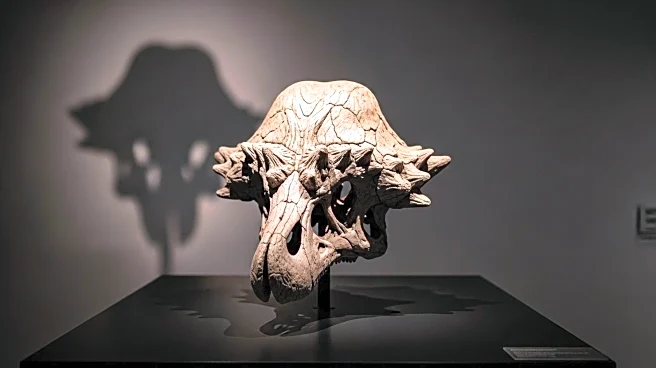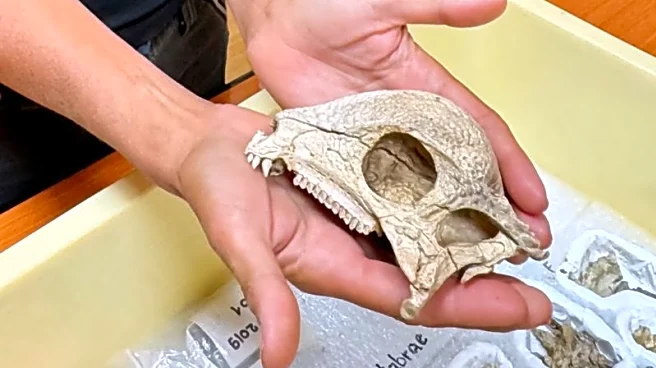What's Happening?
Researchers have discovered insect-bearing amber in Ecuador, dating back 112 million years to the Cretaceous era. This amber provides a glimpse into the ancient ecosystems of South America when it was part of the supercontinent Gondwana. The amber contains fossils of various insects, including flies, beetles, ants, and wasps, as well as plant fossils like spores and pollens. The discovery is significant as it offers insights into the biodiversity and environmental conditions of prehistoric forests in the Southern Hemisphere, which were dominated by resin-producing trees.
Why It's Important?
This discovery is crucial for understanding the evolution of ecosystems in the Southern Hemisphere during the Cretaceous period. It provides valuable information about the biodiversity and climate conditions of ancient forests, contributing to the broader knowledge of Earth's prehistoric environments. The findings could influence paleontological research and conservation efforts by highlighting the importance of preserving fossil sites. Additionally, the study of these amber fossils may offer insights into the evolutionary history of insects and plants, impacting scientific understanding of biodiversity.
Beyond the Headlines
The discovery of amber in Ecuador challenges previous assumptions that fossilized resin was predominantly found in the Northern Hemisphere. It underscores the importance of exploring under-researched regions for paleontological studies. The findings also raise questions about the distribution and diversity of ancient ecosystems, potentially leading to new theories about the movement and evolution of species across continents. This research could inspire further exploration of Gondwana's remnants, offering a deeper understanding of Earth's geological history.

